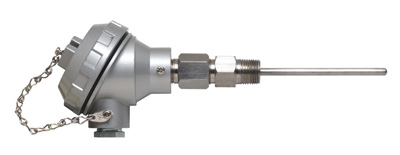| Silicon Diodes |
Silicon Diodes are the best choice for general-purpose cryogenic use. The cryogenic temperature sensors are interchangeable (they follow a standard curve) and are available in robust mounting packages and probes. Silicon Diodes are easy and inexpensive to instrument, and are used in a wide variety of cryogenic applications, such as cryo-coolers, laboratory cryogenics, cryo-gas production, and space satellites. |
| |
| Cernox™ |
Cernox™ sensors can be used from 100 mK to 420 K with good sensitivity over the whole range. They have a low magnetoresistance, and are the best choice for applications with magnetic fields up to 30 T (for temperatures greater than 2 K). Cernox™ are resistant to ionizing radiation, and are available in robust mounting packages and probes. Because of their versatility, they are used in a wide variety of cryogenic applications, such as particle accelerators, space satellites, MRI systems, cryogenic systems, and research science. |
| |
| Platinum |
Platinum RTDs are an industry standard. They follow an industry standard curve from 73 K to 873 K with good sensitivity over the whole range. Platinum RTDs can also be used down to 14 K. Because of their high reproducibility, they are used in many precision metrology applications. Platinum RTDs have limited packaging options, but they are inexpensive and require simple instrumentation. They are widely used in cryogenic applications at liquid nitrogen temperatures or greater. |
| |
| Germanium |
| Germanium RTDs have the highest accuracy, reproducibility, and sensitivity from 0.05 K to 100 K. They are resistant to ionizing radiation, but are not recommended for use in magnetic fields. Germanium RTDs are used mostly in research settings when the best accuracy and sensitivity are required. Germanium and Ruthenium Oxide are the only two cryogenic temperature sensors that can be used below 100 mK. |
|
| Ruthenium Oxide (Rox™) |
Ruthenium Oxide RTDs can be used to below 50 mK. Their unique advantage is that they have a low magnetoresistance and follow a standard curve. Their upper temperature range is limited to 40 K, and Cernox™ are better in magnetic fields above 2 K. Ruthenium Oxide sensors are used for applications that require a standard curve in magnetic fields, such as MRI systems. Along with Germanium, they are the only cryogenic temperature sensors that can be used below 100 mK. |
| |
| GaAlAs Diodes |
GaAlAs Diodes offer high sensitivity over a wide range of use (1.4 K to 500 K). They are useful in moderate magnetic fields, and offer many of the advantages of Silicon Diodes—easy to instrument, wide range, and robust packaging. They do not follow a standard curve. GaAlAs diodes are used in moderate magnetic field applications when instrumentation constraints (e.g., legacy installations, cost) prevent the use of Cernox™. |
| |
| Rhodium-Iron |
Rhodium-Iron temperature sensors can be used over a wide temperature range, and are resistant to ionizing radiation. Wirewound capsule versions (RF-800) have excellent stability and are widely used as secondary temperature standards by many national standards laboratories.
Thin-film Rhodium-Iron sensors have various packaging options, including the SD package and bare chip. They require similar instrumentation as a Platinum RTD, and are used in applications when packaging, size, and temperature range prevent the use of Platinum or Cernox™ sensors. |
|
| Carbon-Glass |
| Carbon-Glass resistance cryogenic temperature sensors are highly sensitive and reproducible and can be used from 1.4 K to 100 K in magnetic fields up to 20 T. The magnetoresistance of Carbon-Glass is less than Cernox™. Physical construction of the CGR also limits the number of packaging options. For most cryogenic applications requiring high sensitivity in magnetic fields, Lake Shore recommends the Cernox™ sensor. |
| |
| Thermocouples |
Thermocouples can be used over an extremely wide range and in harsh environmental conditions, and follow a standard response curve. Less accurate than other cryogenic temperature sensors, special techniques must be employed when using thermocouples to approach temperature accuracies of 1% of temperature. Thermocouples are used for their small size, extremely wide temperature range (exceeding high temperature limits of Platinum RTDs), and simple temperature measurement methodology. |
| |
| Capacitance |
Capacitance sensors are ideally suited for use as temperature control sensors in strong magnetic fields because they exhibit virtually no magnetic field dependence. Small variations in the capacitance/temperature curves occur upon thermal cycling. It is recommended that temperature in zero field be measured with another cryogenic temperature sensor, and that the capacitance sensor be employed as a control element only. |
|


